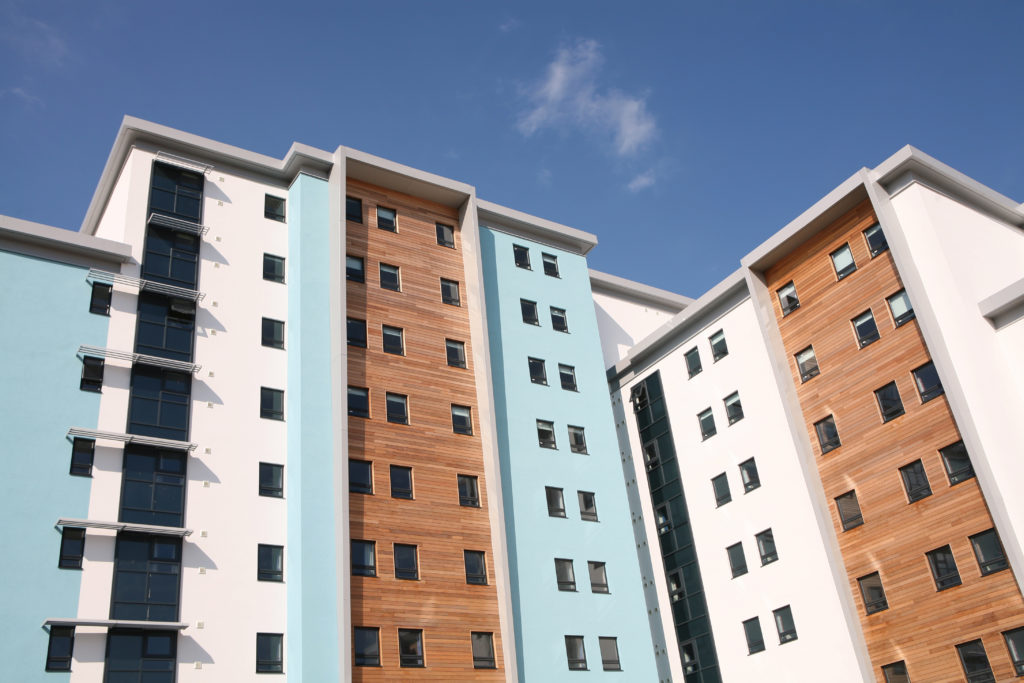
The EWS1 form sets an industry-wide standard assessment to regulate the safety of external cladding on high-rise buildings.
Following the tragedy of the Grenfell Tower fire in 2017, there has been an understandable concern regarding the combustibility of cladding and insulation within high-rise residential buildings. To work towards addressing this, the government banned the use of combustible cladding on high-rise buildings with the Cladding Ban Regulations and introduced the External Wall Fire Review (EWS1 form).
As the industry gets used to the changes, here is what you need to know:
What is the EWS1 form?
The EWS1 form evidences that a qualified professional has assessed the safety of the external cladding in respect of residential properties over 18 metres in height. This covers the entire external wall system, including cladding, insulation and fire break systems.
The property will be allocated to one of two categories:
- Option A: where the materials in the external wall would be unlikely to support combustion; or
- Option B: where combustible materials are present in the external wall, a more detailed assessment is undertaken.
The form is valid for five years, although a building must be reassessed if any renovation or adaption work takes place within that period, and applies to an entire block rather than each individual flat.
I’m selling my flat, how does the EWS1 form affect me?
If your property is within a residential apartment building where the highest floor is 18 metres or more above the ground, or if there are specific concerns about cladding on the building, you may be required to obtain a copy of any EWS1 form from your landlord or management company to provide to your purchaser.
Since the introduction of the new requirement, owners selling their leasehold flats have faced lengthy delays due to availability of qualified professionals to undertake the assessment where valid certification is not already in place. To meet this demand, the government have recently announced funding to train additional assessors. They have also confirmed that the form EWS1 will no longer be required if the building does not have cladding allowing conveyancing transactions across England to set into motion once more.
I’m purchasing a flat, how does this affect me?
Your conveyancer should obtain a copy of the EWS1 for the block if you are looking to purchase a flat in a building meeting the criteria for assessment. This will allow you to consider not only the safety aspect, but also the financial implications if the block falls within Option B.
Dependant on the service charge regime in place, you may be liable to increased service charge if the landlord opts to recover remedial works under the service charge. You may also experience increased insurance premiums if the cladding is considered a risk.
If you are purchasing your property with the assistance of a mortgage, your lender will also require confirmation that the entire external wall system complies with the latest government advice. If a valid EWS1 form is not available, it is possible the lender’s valuer will give a nil value for the property making it unmortgageable and given the time it is currently taking for owners to obtain the EWS1 assessment, it may be best to consider whether to proceed with the purchase.
I’m a landlord, how does this affect me?
There is no statutory obligation for a landlord to provide an EWS1 to leaseholders within their building. However, with some lenders refusing to proceed with mortgage applications where the form cannot be produced, it can mean tenants are unable to sell their leasehold interest and the value and insurance costs of the building may be affected where the fire-safety cannot be evidenced.
If the EWS1 assessment reveals remedial works are required if electing to engage in the process, there are government funds to aid owners in undertaking the remediation for both ACM and non-ACM cladding. There is also a Waking Watch Relief Fund to install fire alarm systems in the interim until funds are raised for more extensive works.
Such assistance will be available where owners and their buildings meet the qualification criteria and recovery of the full cost may not be possible. With owners facing negative equity or debt funding the remainder of the cost, being up to £50,000 per apartment, some landlords have opted to fund the works by increasing service charge for their tenants where the provisions of the leases allow. It should be noted that this has implications with tenants’ future borrowing if the service charge is deemed excessive.
Future Reform
The Royal Institution of Chartered Surveyors issued draft guidance for public consultation. The guidance aims to help homebuyers and leaseholders who are impacted by delays in the housing market, caused by safety concerns over cladding, and the cost of remediation.
The guidance will help to establish a consistent position for valuers carrying out mortgage valuations in deciding where an assumption can be made that remediation work, which can affect the value of the property, is unlikely to be needed and an EWS1 should therefore not be required. The consultation closed on 25 January 2021 and the proposed guidance note is due to be published in Spring 2021.
